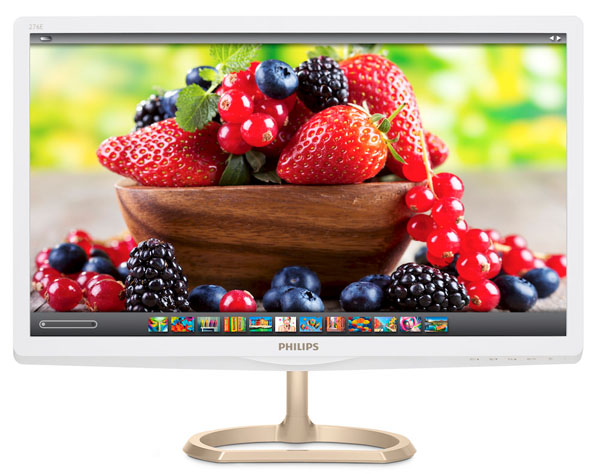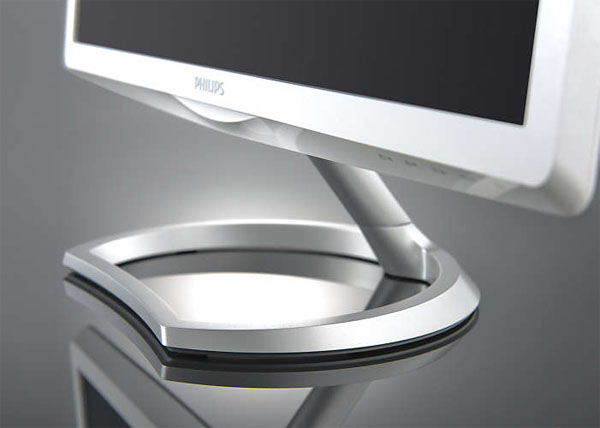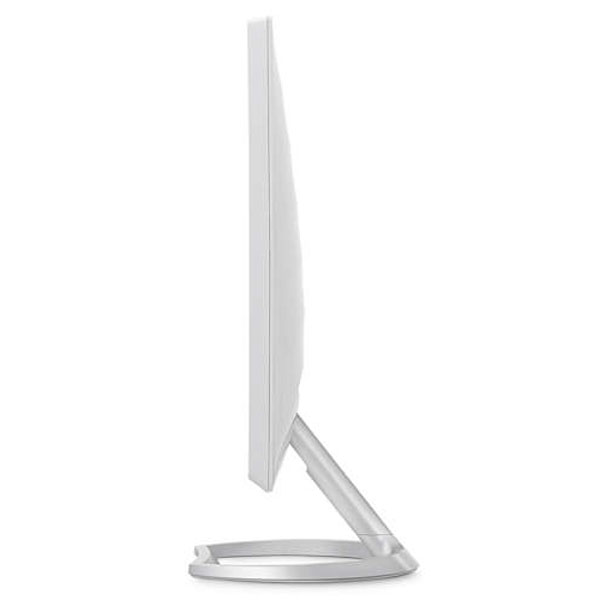Philips 276E6 27-inch Quantum Dot Monitor Review
We've been hearing about Quantum Dots for a while but Philips' 276E6 is the first computer monitor to use the technology. It's a 27-inch IPS-ADS screen with FHD resolution and an Adobe RGB color gamut. Today, we check it out in our labs.
Why you can trust Tom's Hardware
Packaging, Physical Layout And Accessories
The 276E6 comes in a slim carton that's just big enough to hold the panel, base and two large foam blocks. Protection is adequate but if you mail order one and the box looks damaged, inspect the contents before accepting.
The only video cable in our sample's box was VGA, even though the monitor has DVI and HDMI inputs. The external power supply and its cord are white to match the chassis. The base is a nice gold-anodized aluminum, attached with a captive wingnut. In addition to a printed quick-start guide you get a CD with drivers and user manuals in multiple languages.
Product 360
The 276E6 has one of the most aggressive anti-glare layers in recent memory but it doesn't seem to affect image clarity nor does it produce visible grain. It's fairly difficult to wash out the image with reflections so you can place it just about anywhere. The controls are touch sensitive and partially hidden on the underside of the panel's bottom bezel. They respond to a very light touch and while not as intuitive as a joystick, they serve their function well.
You don't see white monitors too often, at least on PC desktops, so the 276E6 instantly stands out. The all-metal base is a nice complement to the package and offers tilt as its only adjustment. It looks minimalist in the photo but is much more solid than you'd think on first inspection. It's better than what's found in most sub-$300 displays.
The side profile is slim at slightly less than two inches. There are no angles in back, just a smooth taper from side to side with subtle scallops molded into the one-piece cover. The only feature to be seen is a Philips logo molded in relief. Unfortunately, the VESA mount is absent. Also missing are speakers and any sort of obvious ventilation. The 276E6 doesn't run hot though.
The inputs face backwards and include one each of HDMI/MHL, DVI and VGA. We were surprised to see DisplayPort omitted but this is after all an FHD screen. You also get a headphone output, which plays signals from the HDMI input. On the far right is a connection for the external power brick.
Get Tom's Hardware's best news and in-depth reviews, straight to your inbox.
Current page: Packaging, Physical Layout And Accessories
Prev Page Introduction Next Page OSD Setup And Calibration
Christian Eberle is a Contributing Editor for Tom's Hardware US. He's a veteran reviewer of A/V equipment, specializing in monitors. Christian began his obsession with tech when he built his first PC in 1991, a 286 running DOS 3.0 at a blazing 12MHz. In 2006, he undertook training from the Imaging Science Foundation in video calibration and testing and thus started a passion for precise imaging that persists to this day. He is also a professional musician with a degree from the New England Conservatory as a classical bassoonist which he used to good effect as a performer with the West Point Army Band from 1987 to 2013. He enjoys watching movies and listening to high-end audio in his custom-built home theater and can be seen riding trails near his home on a race-ready ICE VTX recumbent trike. Christian enjoys the endless summer in Florida where he lives with his wife and Chihuahua and plays with orchestras around the state.
-
xenol Finally! I've been really wanting to see this technology come through to more than two products (that I'm aware of)Reply -
Dan414 I'm not too concerned with power consumption at my desk. How about phones and laptops - will we see quantum dot screens there soon?Reply -
gunbust3r Takes some design ability to make a 27" look more like a 22", good job on those monster size white bezels. :pReply -
sillynilly Love the tech, but the screen specs at that size will make it look like monster dot technology. 1920 x 1080 at 27" looks just horrendous after using a higher rez monitor. Some monitor OEMs are a bit behind the times it seems (although this tech is pretty cool).Reply -
picture_perfect ReplyFor gamers seeking vivid color and a bright image, your monitor has arrived. 18ms is an excellent score for any 60Hz display
I can only LOL and I never LOL. 18ms response (57ms total lag) is just god awful terrible. These arbitrary endorsements are getting lame. -
CaedenV Did I miss where it has a price? It can be the best consumer display in the world, but if it is $5,000 then that would not make it a recommended buy.Reply -
Nintendork All this quantum bull* and still 1000:1? Meanwhile tablets and smartphones using IPS neo from jdi with near 2000:1.Reply
Or even better an RGB OLED display.



